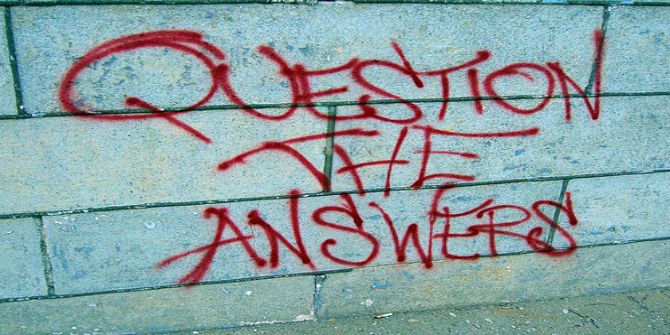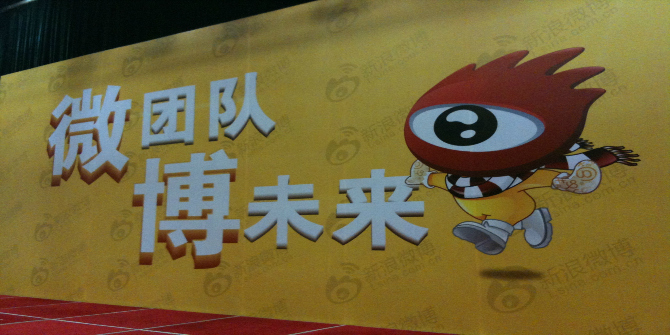Internet memes, such as ‘LOLcats’, ‘Planking’, or ‘Gangnam Style’, have become prominent aspects of digital culture. But they are more than just funny photos or videos shared with friends; in Memes in Digital Culture, Limor Shifman suggests that they represent a new form of digital participation. An in-depth analysis of the origin and nature of Internet memes makes this book a great read for any researcher interested in digital culture and new media, writes Sophie Lecheler.
 Memes in Digital Culture. Limor Shifman. MIT Press. November 2013.
Memes in Digital Culture. Limor Shifman. MIT Press. November 2013.
Why did a YouTube video of ‘Gangnam Style’, a song performed by South Korean singer PSY, attract millions of viewers online? More importantly, why did some of these viewers then invest time and effort into producing new ‘spoof’ versions of this video (think: ‘Inmate Gangham Style’, ‘Romney Style’ or ‘Eton Style’)? What do self-produced videos or photoshopped images that are shared by millions say about Web 2.0 and its’ participatory potential? Memes in Digital Culture examines the central aspect of digital culture that is Internet memes. Author Limor Shifman provides a comprehensive and clear definition of what Internet memes are. More importantly, Shifman argues that Internet memes are indicators of an active digital culture and are as such relevant for researchers interested in civic participation also. Shifman’s concept of the Internet meme is based on the idea of ‘memes’, which goes back to Richard Dawkins’ 1976 book The Selfish Gene. According to Dawkins, memes are small parts of our culture that spread from person to person either through copying or imitation. As such, memes have been the subject of a variety of studies during the last decades, and Shifman offers the reader a very brief but satisfying overview of the field of ‘memetics’ early on in the book (Chapters 1 and 2). Shifman then connects the study of memes with modern digital culture and the Web 2.0 (Chapter 3). This not only makes for a clear definition of what Internet memes are (Chapter 4), but also supports Shifman’s central argument in this book: Internet memes are more than just a fun pastime or simple jokes, but are part of a “(post)modern folklore” (p.15) or shared culture of online participation. Understanding this shared culture is relevant from a media studies as well as a political science perspective, as memes can be thought of as a new form of civic participation. In any case, Shifman makes clear that Internet memes are to be taken seriously and that much research needs to be done in order to understand their potential and role in democratic and nondemocratic states.
Beyond its clear theoretical basis, it is the integration and explanation of many real-life Internet memes that makes this book a good read, even for readers who are new to the field. For instance, Chapter 6 contains arguments as to why some digital content on, for example, YouTube motivates users to create new versions of this content. Unsurprisingly, some of the biggest catalysts of Internet memes are videos and photos that feature (sometimes unintentional) humour and/or representations of ‘flawed’ individuals struggling with their daily lives. Shifman illustrates these ‘memetic’ videos or photographs by a range of examples. One is the popular and widely-shared ‘David after Dentist’ video, which features little David babbling away under the effects of anaesthesia (p. 77). Chapter 7 provides an even more detailed insight into understanding Internet memes and produces an overview of different meme genres. Each genre is again illustrated by examples, sometimes including the actual meme (in case of photographs) itself. Meme genres range from the amateurish ‘Lipsynch’ videos, where an individual attempts to match their lip movements to a particular song, to ‘Reaction Photoshops’, the editing and personalization of a photo that has previously provoked a humorous or emotional reaction with the individual.

That Internet memes go beyond general silliness is convincingly illustrated in Chapter 8, where Shifman connects memes with political participation and election campaigns. Political memes, which can be serious as well as humorous, are produced by both online users as well as political campaigners. Shifman uses the 2008 US Presidential campaign to illustrate how memes can be used as a persuasive tactic within an election campaign. Shifman argues that the important role memes play in future election campaigns is based on the understanding that information stemming from peers, such as friends or family is in the end more persuasive than that generated by political elites. Yet, as the example of the 2008 campaign shows, political memes are not actually characterised by amateurish, user-generated videos or photos. Rather, the 2008 campaign featured a number of (semi-) professional meme-style videos such as the “Yes We Can” music video, which was produced by a group of professional artists.
Shifman also shows that political memes bear the potential for a grassroots approach: The Occupy Wall Street movement made the slogan “We Are the 99 Percent” popular. This slogan also led to a prolific Internet meme, in which individuals posted photos of themselves with a written statement about their lives and tribulations, signed with “I am the 99 percent”. Again, Shifman argues that memes offer a new way of civic participation, one where citizens are able to express political opinions and participate in important debates. This argument connects with other studies in the field of new media, which also find that user-generated content may function as a mobilizer for citizens who are not usually able or willing to convey their political opinions in the traditional mass media. For those with plans to conduct research in the field of Internet memes or digital culture, Shifman offers a short summary of her main arguments, as well as pointers for future research in the field in the last Chapter. As Shifman herself states, Internet memes remain seriously understudied.
All in all, this book provides a comprehensive and easy-to-read introduction into the world of Internet memes with a great many examples that will help readers who are not familiar with modern digital culture to delve into the topic. Because of its focus on both popular culture memes as well as political memes, it is equally interesting for scholars from both fields.
——————————–
Dr Sophie Lecheler is a Marie Curie Research Fellow at the Department of Government at the LSE and an Assistant Professor of Political Communication at the Amsterdam School of Communication Research (ASCoR) at the University of Amsterdam, The Netherlands. Her research focuses on political journalism in the EU and the effects of journalistic news on citizens’ political attitudes and behaviour. She is currently working on a project on the role of emotions in European political communication. She tweets at @Sophelpoffel. Read reviews by Sophie.







